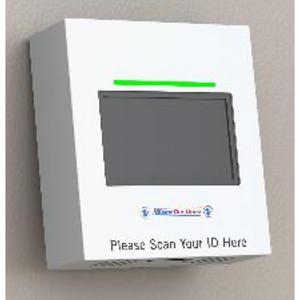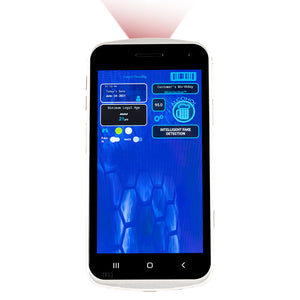In today's world, driver's licenses play a crucial role in our daily lives. They serve as a widely accepted form of identification and allow individuals to operate motor vehicles legally.
Driver's licenses establish our identity and demonstrate our competence and responsibility. Whether for commuting, running errands, or embarking on a road trip, possessing a valid driver's license is essential for personal mobility and independence.
While driver's licenses are issued in every state, each state has its specific requirements, processes, and unique features associated with its licenses.
Today's blog will focus on the Oregon driver's license, also referred to as the Oregon DL, providing comprehensive insights into its various aspects. Understanding the specific details of an Oregon driver's license is essential for residents and individuals planning to move to Oregon.
A Quick History And Background Of Oregon Driver's Licenses
The history of Oregon driver's licenses dates back to the early 20th century when automobiles became increasingly prevalent. In 1905, Oregon introduced its first driver's license law, making it one of the pioneering states regulating motor vehicle operations.
Over the years, the state has continuously evolved its licensing system to enhance safety and ensure compliance with traffic laws. Understanding the historical context helps us appreciate the significance and development of Oregon driver's licenses in promoting responsible driving practices.
Different Types Of Oregon Driver's Licenses
In Oregon, driver's licenses are categorized based on the type of vehicle and the purpose of use. The main types of permits include:
- Class C driver's license- For non-commercial vehicles
- Class M license - For motorcycles
- Commercial Driver's License (CDL) - For commercial vehicle operators and various endorsements for specialized driving privileges such as passenger transportation, hazardous materials, etc.
Each license type has specific requirements and qualifications tailored to accommodate the diverse needs of Oregon residents.
Features And Design Of Oregon Driver's Licenses
Oregon driver's licenses possess several distinctive features and a unique design aimed at preventing fraud and ensuring their authenticity. These licenses incorporate advanced security elements such as holograms, UV printing, and tamper-resistant features to deter counterfeiting and protect the integrity of personal information.
Moreover, Oregon driver's licenses comply with federal requirements, including the real ID Oregon standards, which set standards for identification documents used for federal purposes. Familiarizing oneself with the features and design of an Oregon driver's license is essential for easy identification and verification.
How to Renew Oregon Driver's Licenses?
When you hold an Oregon driver's license, you must know its expiration date. Oregon driver's licenses typically expire eight years from the date of issuance, although some individuals may have shorter expiration periods due to specific circumstances. To ensure continuous driving privileges, it's crucial to complete your Oregon driver's license renewal before it expires.
READ MORE: How Can ID Scanners Improve Safety in Schools and Universities?
Renewing your Oregon driver's license is a straightforward process that can be done online, by mail, or in person at a local DMV office. The Oregon Driver and Motor Vehicle Services Division (DMV) will mail you a renewal notice a few weeks before your license expires. This notice will provide instructions on how to renew and any specific requirements you may need to meet. You can also check your DMV license status online to ensure all your information is up to date before proceeding with the renewal.
Follow the steps listed below to renew your driver's license in Oregon:
Review the Renewal Notice: Carefully read the renewal notice sent by the DMV, which contains essential information about the renewal process.
Check Your Eligibility: Ensure that you meet the eligibility criteria for renewing your driver's license, such as having a valid social security number and being medically fit to drive.
Choose the Renewal Method: Decide whether you prefer to renew your license online, by mail, or in person at a DMV office.
Complete the Renewal Application: Provide the required information on the renewal application, including personal details, updated contact information, and a current photograph.
Pay the Renewal Fee: Submit the appropriate renewal fee, which varies depending on the license type and any additional endorsements you may hold.
Submit the Application: If renewing online, follow the instructions on the DMV's website. If renewing by mail, send the completed application and payment to the address specified on the renewal notice. For in-person renewals, visit your local DMV office.
Receive your Renewed License: Once your application is processed, you will receive your renewed driver's license by mail or at the DMV office.
How to Replace a Lost, Stolen, or Damaged Driver's License
Losing or damaging your Oregon driver's license can be inconvenient, but taking immediate action is essential to obtain a replacement. If your license is lost, stolen, or significantly damaged, follow these procedures to get a replacement:
Report the Loss or Theft: If your license is stolen, report the theft to the local law enforcement agency. This step is crucial for documenting the incident and preventing identity theft.
Gather Necessary Documentation: Prepare the required documents to prove your identity, such as your Social Security card, birth certificate, or passport. You may also need to provide proof of residency in Oregon.
Visit a Local DMV Office: Go to a nearby DMV office and tell them you need a replacement for your lost, stolen, or damaged license. Provide the necessary documentation and complete the appropriate application form.
Pay the Replacement Fee: The fee for the replacement license may vary depending on the circumstances and type of license.
Get a Temporary License: In some cases, the DMV may issue a temporary driver's license that you can use until your replacement license arrives.
Receive your Replacement License: Once your application is processed, you will receive your replacement Oregon driver's license by mail or at the DMV office, depending on the DMV's procedures.
How ID Scanner is Used in Oregon
ID scanners play a crucial role in Oregon's age verification and identification processes. These advanced technological devices are designed to quickly and accurately scan and authenticate identification documents such as Oregon driver's licenses. They help businesses and establishments verify the age and identity of individuals, ensuring compliance with age restrictions and legal requirements.
READ MORE: The Future of ID Scanners: Emerging Technologies and Trends
ID scanners work by scanning the barcode or magnetic stripe on an ID card and extracting the information stored within it. The id scan machine then analyzes the data and cross-references it with databases to verify the authenticity of the ID. This process enables businesses to confirm the age of customers and make informed decisions regarding age-restricted products or services.
In Oregon, using ID scanners for age verification and identification purposes is subject to specific legal requirements and regulations. Businesses must comply with the Oregon Revised Statutes (ORS) and the administrative rules outlined by the Oregon Liquor Control Commission (OLCC) when using ID scanners.
The OLCC provides specific guidelines and regulations regarding using ID scanners in establishments serving alcohol. Businesses need to familiarize themselves with these requirements to ensure proper usage and legal compliance. By adhering to these regulations, businesses can protect themselves from potential liability and maintain a safe and responsible environment for their customers.
Why Using ID Scanners for Businesses and Establishments in Oregon is Essential?
The use of ID scanners in Oregon offers several benefits and advantages for businesses and establishments:
Enhanced Age Verification: ID scanners provide a reliable method for accurately verifying the age of individuals. They can quickly identify fake or altered IDs, reducing the risk of underage access to age-restricted products or services.
Legal Compliance: By using age-verification ID scanners, businesses can ensure compliance with Oregon's legal requirements and regulations for age-restricted sales. This helps protect establishments from potential fines, penalties, or legal consequences of non-compliance.
Time and Efficiency: ID scanners streamline the age verification process, allowing businesses to expedite transactions and provide a smoother customer experience. They eliminate the need for manual ID checks, reducing wait times and improving operational efficiency.
Fraud Prevention: Fake ID detectors incorporate advanced security features and authentication technologies to detect counterfeit or altered IDs. By detecting fraudulent identification documents, businesses can prevent fraudulent activities and protect their reputation.
Data Collection and Analytics: Many ID scanners can collect and store data from scanned IDs. This information can be valuable for businesses to analyze customer demographics, track trends, and make informed marketing decisions.
Peace of Mind: Implementing ID scanners instills confidence in businesses and customers. It reassures customers that the establishment takes age verification seriously and prioritizes safety and well-being.
By embracing ID scanner technology, businesses and establishments in Oregon can improve their age verification processes, ensure legal compliance, and create a safer environment for everyone.
Frequently Asked Questions about Oregon Driver's Licenses
What documents are required to apply for an Oregon driver's license?
You need proof of identity, legal presence, and residency to apply for an Oregon driver's license. This may include documents such as a birth certificate, social security card, and proof of address.
How long is an Oregon driver's license valid for?
Oregon driver's licenses are typically valid for eight years. However, for individuals under the age of 21, the license will expire on their 21st birthday.
Can I renew my Oregon driver's license online?
Yes, you can renew your Oregon driver's license online if you meet certain eligibility requirements and your license is not suspended or expired for an extended period.
What are the age restrictions for obtaining an Oregon driver's license?
The age restrictions for obtaining an Oregon driver's license depend on the license type. Individuals can apply for a learner's permit at the age of 15, a provisional driver's license at 16, and a full driver's license at 18.
What are the different classes of Oregon driver's licenses?
Oregon driver's licenses are categorized into Class C for non-commercial vehicles and Class A, B, and C for commercial vehicles. The specific class you need depends on the type of vehicle you intend to operate.
Can I use my Oregon driver's license as a form of identification for domestic flights?
Yes, an Oregon driver's license can be used as an acceptable form of identification for domestic flights within the United States.
How can I update my personal information on my Oregon driver's license?
To update your personal information on your Oregon driver's license, you will need to visit a DMV office in person and provide the necessary documentation to support the change, such as a marriage certificate or court order.
What should I do if my Oregon driver's license is lost or stolen?
If your Oregon driver's license is lost or stolen, you should report it to the Oregon DMV immediately. You can then apply for a replacement by visiting a DMV office and following the required procedures.
Staying informed about the intricacies of the Oregon driver's license demonstrates your commitment to safety, legality, and responsible practices. By adhering to the regulations and requirements set forth by the Oregon Department of Transportation, you contribute to a safer and more secure community.
So, whether you are an Oregon resident, a business owner, or an individual interacting with Oregon driver's licenses, make it a priority to continually educate yourself, stay informed, and support the integrity of age verification processes and identification practices.




